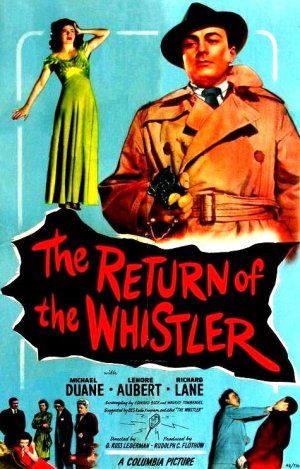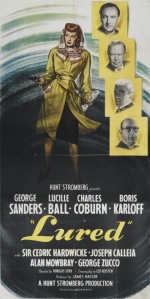
Stage Fright (1950)
Directed by Alfred Hitchcock
Warner Bros.
Most film lovers love to rank things. When talking about a director or star they love, a common question is, “Where do you place this film in their whole body of work? Top third? Middle third? Bottom third?”
Obsessively rating and ranking things comes pretty easily to me, but as I get older I try to avoid it. I enjoy putting together “best of the year” lists, but aside from that I don’t give films 1- to 5-star ratings or a “thumbs up” or “thumbs down.” I think it’s more interesting to talk about a film’s meaning and significance, what works and what doesn’t, and how it fits in with the director’s other films and personal obsessions.
So in that spirit, instead of rating Stage Fright from 1 to 10 or ranking it compared with Hitchcock’s other movies, let me just say that I think it is Hitchcock’s first purely enjoyable and crowd-pleasing piece of entertainment since Spellbound (1945) and Notorious (1946).
The Paradine Case (1947) was a chilly and somewhat dour courtroom drama. I absolutely love Rope (1948), but it’s a technical exercise that didn’t do very well at the box office and is usually loved more by film geeks than by moviegoers who just want to be entertained.
I didn’t love Stage Fright as much as I love some of Hitchcock’s films, but after the weird, overheated Technicolor melodrama of Under Capricorn (1949), Stage Fright felt like a return to form. It’s a tightly paced black and white melodrama full of intrigue and humor. There’s murder, romance, hidden identities, audience misdirection, and some of the arch, sexually suggestive humor that was Hitchcock’s bread and butter.
Stage Fright stars wide-eyed Jane Wyman as Eve Gill, an aspiring actress who gets the role of a lifetime when she goes undercover as Marlene Dietrich’s maid to try to clear her friend of murder.
Eve Gill’s friend is another actor, Jonathan Cooper (Richard Todd), who tells her he’s been the victim of a terrible misunderstanding. His secret lover, the flamboyant stage siren Charlotte Inwood (Marlene Dietrich), came to him after killing her husband and begged for his help. While attempting to help her cover up the crime, he was spotted in her house and pursued by police as the most likely culprit, and now he needs Eve to help him clear his name.
Eve has a pretty bad crush on Jonathan, and since his story obviously seems totally 100% on the up-and-up, Eve Gill hides him at her father’s coastal home and goes undercover. Incidentally, her father, Commodore Gill (Alastair Sim), was my favorite part of the film. Alastair Sim is good in every role I’ve ever seen him in, but he absolutely kills it in this movie. His line readings are subtle and hilarious, and he communicates more subtext with his eyebrows than most actors can with their whole faces.
I also loved Marlene Dietrich in this film. She plays a sort of “worst case scenario” tabloid version of her own persona — an absolute diva who refuses to learn any of her underlings’ names. If you like Dietrich’s singing (and I do), a highlight of Stage Fright is her extravagant stage performance of the Cole Porter song “The Laziest Gal in Town.”
Stage Fright probably won’t end up being a Hitchcock film that I keep coming back to the way I keep coming back to Notorious, North by Northwest (1959), and Psycho (1960), but it was an incredibly fun little movie that I enjoyed every minute of.
After I watched it I checked out people’s reviews online and was surprised to see how many people hated Stage Fright. Plenty of them just didn’t seem to like it, and there’s not much I can say about that, but many of them seemed to be angry about a piece of misdirection that Hitchcock uses in the film. Come on, people, that’s just Hitchcock messing with you by breaking cinematic rules you think are set in stone! If you don’t like to be screwed with, you probably shouldn’t go anywhere near Hitchcock, who was a master of mischief.
The fact that he still manages to screw with audiences more than 30 years after his death is just proof of his genius.

















